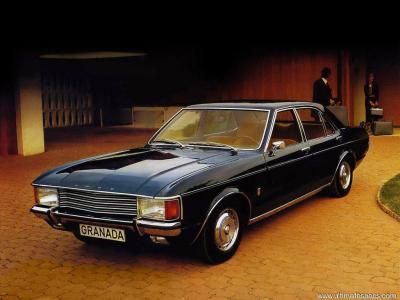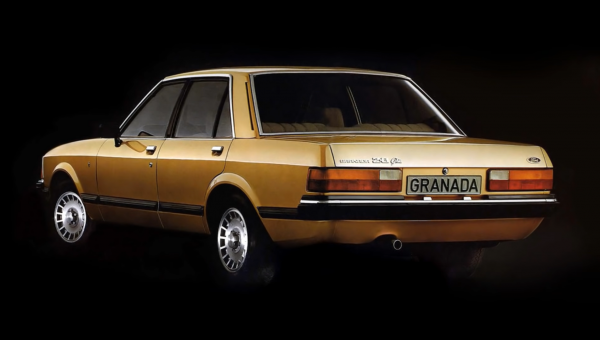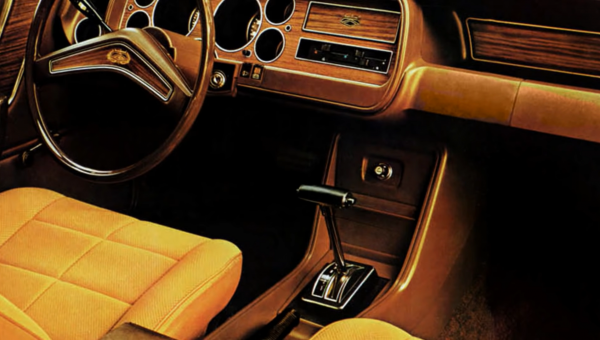No doubt there will be a whole lot of lip smacking going on, not to mention a bit of humming and hawing as a bunch of excited diners mull over those tantalising pages. Well, that's pretty much how it used to be like when Ford provided their customers with a glossy brochure showcasing their full range of cars back in the 1970's.
Fiesta MK1
For starters, how about a tasty little Fiesta MK1? Here we had a light, airy low calorie offering that was fresh and appealing. It helped to tease us into the mid-70's Ford line-up. Hungrier diners may have opted for the ever popular but more substantial Ford Escort, complete with a full list of tempting side orders. Perhaps someone with an altogether more sophisticated palate may have simply thrown caution to the wind and 'gone for it' by choosing a spicy Ford Capri. Others may have been more inclined towards a much simpler but entirely wholesome bread and butter offering which is where the Cortina model range came in. Cortina offered honest value for money which never went amiss amongst Ford's discerning 1970's clientele. Finally, there was some unadulterated decadence on offer too which came in the form of the Ford Granada. Here we had an entire banquet all rolled up into one. A veritable feast. An all you can eat buffet with plenty of mouth-watering goodies to please everyone.
Sadly, these days, there is a notable absentee from the Ford menu. And that's the big flagship Ford. So, where have they all gone?
These days, the rest of the Ford line-up seems to be all present and correct. The Fiesta survives to this day, as does the Focus (which replaced the Escort of course). The Cortina's successor, the Ford Mondeo still survives but production will cease this year, ending a 60 year model lineage.
Flagship model
It must be said that there are a bewildering array of side orders available nowadays such as the Ford Kuga and a few others besides. So, the biggest hole in the Ford line-up is that big flagship model.
Ford had made executive cars since time immemorial. They started life as the Ford 'Z' cars. They were the big Zephyrs and the Zodiacs of old. The Consul branding was available over some model years as a lesser specced version of the Zephyrs and Zodiacs.
Ford's famous 'Z' cars harked all the way back to 1950 and appeared in various guises (MK1 to MK4). Then in 1972 the Ford Granada MK1 hit the showrooms. The Zephyrs & Zodiacs had overseen many developments since their first incarnation in 1950, including the introduction of rear disc brakes as standard on the MK4's in 1966. The MK4's also got Ford's new V6 'Essex' engine which was carried over into the MK1 Granada, having been modified over time.
The 1972 Ford Granada MK1 was an instant hit. Motoring pundits loved it. Many favourably compared Ford's latest chunk of luxury metal with some of its German rivals. Back in 1972, the new Granada looked fresh, modern and cutting edge incorporating more than just a hint of American 'cool'.
Mechanically, the initial UK range used the Ford Essex 2.0-litre V4 and the Essex V6 engine which was available in either 2.5-litre or 3.0-litre capacity. The 2.0-litre Essex V4 engine option was later replaced by the in-line-four cylinder "Pinto" 2.0-litre (TL-series) unit in 1974. Different engines were offered for European customers reflecting differing tax jurisdictions in the various territories. Weirdly, Ford bucked the trend with the MK1 Granada by forsaking the rear brake disc configuration which had been fitted as standard on the Zephyr & Zodiac MK4. The MK1 Granada returned to rear brake drums which appeared to be a retrograde step.
Classic Fords
Granada MK1
The Granada MK1 was available as a four-door saloon, a five-door estate and a two-door fastback coupé. The early (1972–73) coupé version featured curvy 'coke bottle' styling. In 1974, the coupé was revised with straighter lines. The revised “straight line" rear wing coupé was sold only in 3.0 Ghia guise in the UK whereas elsewhere in Europe it was produced in other trim levels as well. The exact same engine options as fitted in the saloon variants were available in coupés outside the UK.
After a few design tweaks along the way, the MK1 Granada was replaced by the MK2 in August 1977. The new straight-lined Granada MK2 was essentially a reskin of the previous model. New external panel work brought the Granada into line with Ford's new design ethos. It reflected styling already seen on the Cortina MK4 and the Fiesta MK1. The rear panels on the MK2 Granada estate were however virtually unchanged from the MK1 - save for a few minor details.
The engineering was also pretty similar. The main differences being the availability of the "Cologne'' V6 engines. These units were available in 2.0-litre, 2.3-litre and 2.8-litre capacities. New features such as air conditioning and fuel injection were made available but only on the more exclusive 2.8-litre derivatives.
After numerous tweaks and upgrades, in 1985 the Granada MK2 was eventually phased out making way for a third-generation. The MK3 was the first European volume production car to feature anti lock brakes (ABS) as standard across the range.
MK3 engine options included the now familiar Pinto engine in 1.8-litre or 2.0-litre guise. The by now aging Cologne V6 engines were carried over from the previous range but their use was fairly short lived because in 1991 a new top of the range model was introduced. This was the super smooth Granada Scorpio 24-valve quad-cam. It featured a 2.9-litre V6 Cologne engine which had been souped-up by Cosworth Engineering.
The MK3 was the final example to bear the Granada badge. The name was entirely changed over to Scorpio in 1994. The Scorpio was subject to a controversial redesign which was deemed ugly and proved to be very unpopular despite these cars featuring some of the most sumptuous leather interiors available. These interiors came in the ‘Ultima’ model which included super luxurious electrically adjustable rear seating. The Scorpio was finally taken out of production in 1998, ending a 48 year lineage.
By this time Ford had acquired Jaguar Cars and later on Volvo. The cash pot was directed at the development of the American Ford Lincoln based Jaguar S-Type and later the Volvo S80. These two cars eliminated the need for Ford to commission yet another premium vehicle which might ultimately have competed against their own existing product range.
So perhaps the next time you browse through a Ford brochure, the top end model will probably still be absent. But I have a sneaky feeling that the top slot will soon be occupied by the Mondeo MK5's 2022 replacement, which promises to be a sizable SUV crossover. Perhaps we're not quite done with our big juicy Fords just yet after all? We'll have to wait and see!
Douglas Hughes is a UK-based writer producing general interest articles ranging from travel pieces to classic motoring.



















